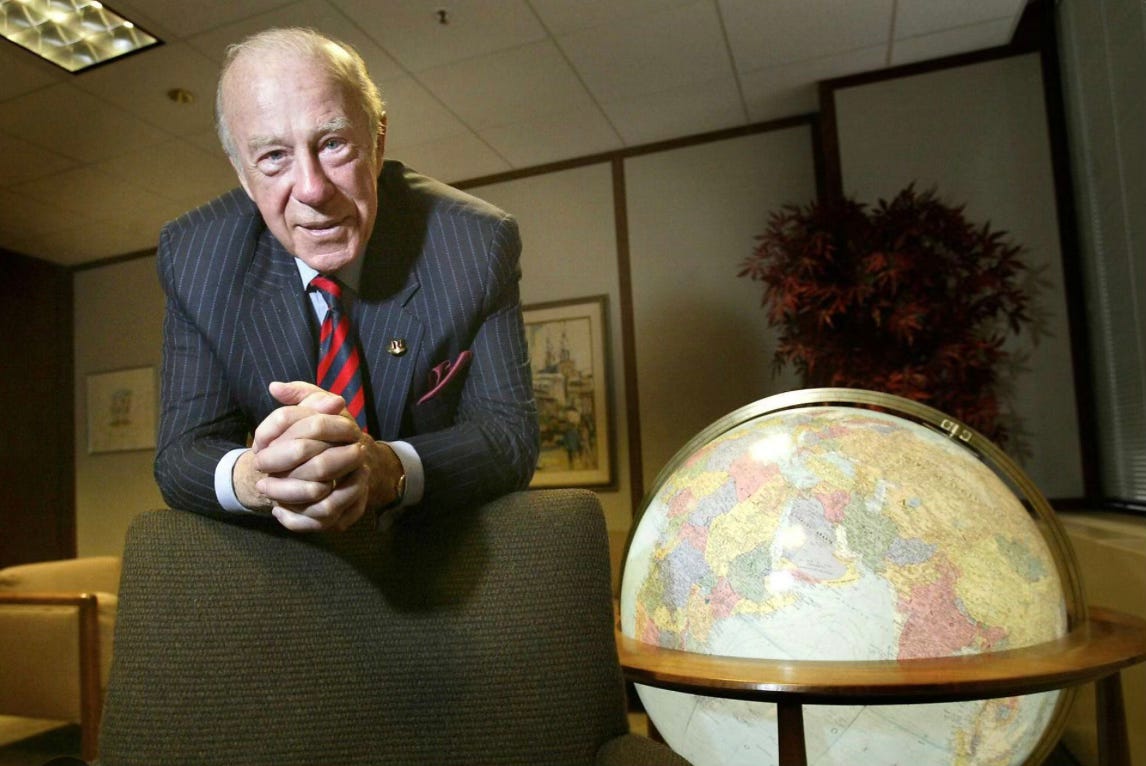Time for an 'American Desk' at the State Department?
The hysteria over the firing of 1,300 employees at the State Department is an example of why a Reverse Ratchet Effect is badly needed.
There’s an old half-joke going back decades that our State Department needs an “American Desk” to look out for the interests of the American people rather than some cosmopolitan agenda of our foreign service schools. And there’s the famous (true) story of Reagan’s secretary of state George Schultz, who liked to ask new foreign service officers heading out to an overseas posting to point to “their country” on a huge globe in his office. Whenever a foreign service officer pointed to Zambia or Upper Volta or wherever, Schultz would correct him, point to the United States and saying, “No—this is your country. And don’t forget it.”
Now, from the hysteria over the Trump Administration firing 1,300 State Department employees—about 2 percent of the total headcount at State—I can only conclude that the Trump didn’t fire enough staff, and should embark on a second round twice this size. As Byron York reported, the State Department grew from 57,340 total employees in 2007 to 72,895 in 2015 to 80,214 in 2024. So it grew by nearly 23,000 employees before the “devastating” cut of 1,300.
In the mind of our ruling class, government is only supposed to grow, and never shrink. It is “Ratchet Effect,” as it has been called. It is long past time for a reverse Ratchet Effect.
But never mind the numbers. The people ousted made clear they deserved to be ousted with their primal screams expressed in signs posted around the halls of Foggy Bottom:
And never mind these awful, presumptuous, preening twits. Let’s take in another measure of the arrogance of our foreign policy establishment. Did you know that our new embassy in Baghdad cost over $1 billion to build, and is the largest U.S. embassy compound in the world? (It is the largest U.S. embassy compound in the world—larger than our embassy in London, our closest ally.) Why do we need such a giant embassy there? Or a huge $700 million embassy in Kabul (now in the hands of the Taliban)? What were the hundreds of foreign service offices and NGO contractors doing there? What possible good could they be doing? I thought we were out of the “nation building” business, but apparently the State Department didn’t get the memo.
We’re also building a huge, $1 billion embassy compound in Beirut, Lebanon. These staggering sums suggest the hubris and pretensions of our foreign policy elites. If Trump fired them all or recalled half the staff from our overseas embassies—wouldn’t matter which half, our foreign relations effectively would probably improve, and I wouldn’t raise an eyebrow.
Exit point: Israel destroying Hezbollah in Lebanon has done more to advance Lebanon’s interests than the billion-dollar State Department palace ever will.







From George Kennan's _Around the Cragged Hill: A Personal and Political Philosophy_:
"The State Department of the years of his service there often used to appear to this writer as a large, poorly designed, and overelaborate machine, the greater part of the energies of which were consumed in the effort to overcome its own internal frictions, the frictions being, of course, the products of overstaffing and bureaucracy. These last mean: more people involved, more internal correspondence, more staff meetings, more levels of authority, more offices to be consulted before anyone could decide anything. I have sometimes insisted that you could set up an American embassy in the middle of nowhere, with no host government to be accredited to, and its staff would be so preoccupied with its internal problems that within a year they would be complaining of shortage of personnel." [from page 147]
From Steve's keyboard to Trump's ears. God willing.